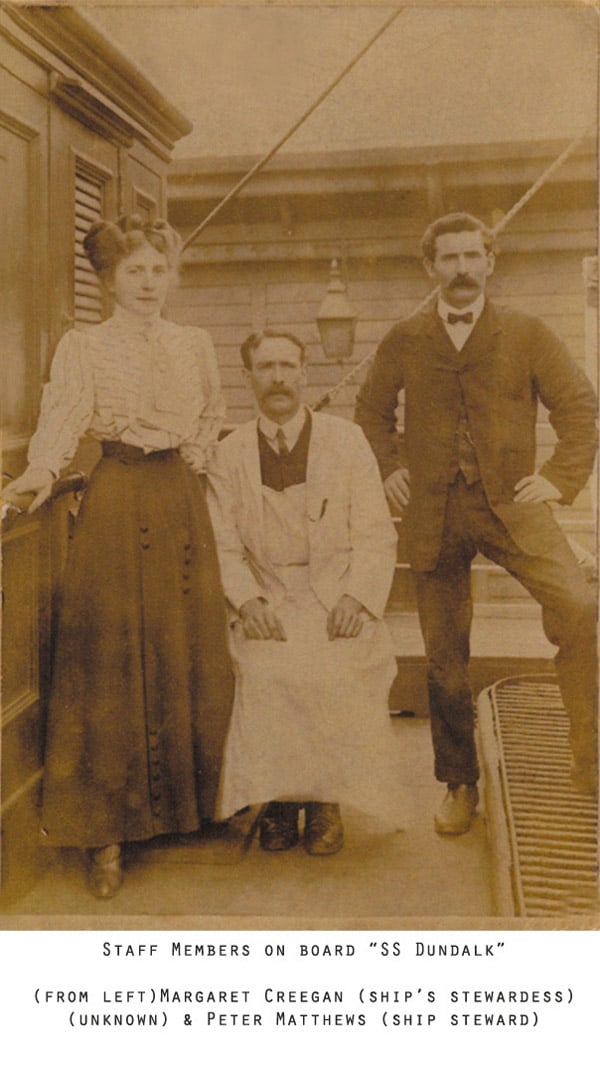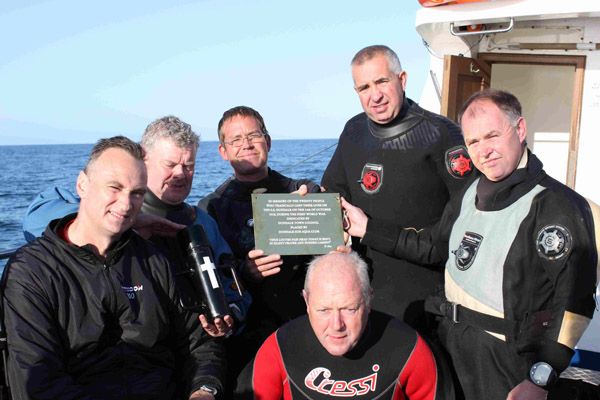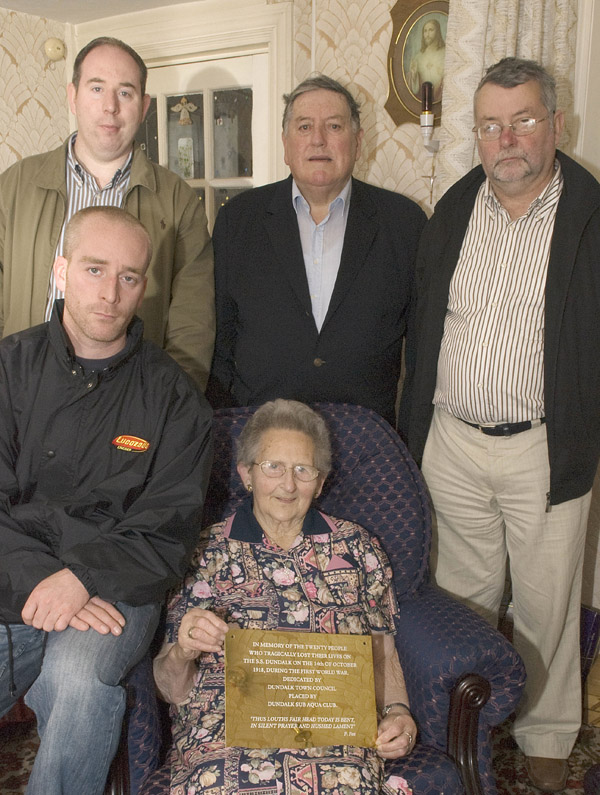Displaying items by tag: Dundalk town council
Dundalk Divers Pay Tribute to 20 Lost on SS Dundalk in 1918
On the 14th of October 1918, 20 people from Dundalk lost their lives aboard SS Dundalk when it sunk 60 miles south of the Isle of Man writes Timmy Carey. Earlier this year to mark the 92nd anniversary of the loss a number of Dundalk Sub Aqua Club divers carried out a commemorative dive to the wreck and laid a plaque of remembrance sponsored by Dundalk town council.
The team also placed an air tight capsule containing objects from the relatives of the survivors and those lost on the tragic ship.
Some artifacts were removed from the wreck and brought home to Dundalk and the team donated them to the local museum where they made a presentation of the expedition and showed some underwater footage of the wreck in its current state. The presentation was held on 14th October to mark the 92nd anniversary of the sinking and the team were joined by some relatives and members of the public for an emotional night with prayers and music provided by Fr Clem McManus a local Redemptorist Priest.
Read or hear the story of the SS Dundalk on their website HERE
Photos below courtesy of Paddy Agnew, Dundalk Sub Aqua Club

Local townsfolk who were lost on The SS Dundalk

Members of Dundalk Sub-Aqua dive team before making their descent to the wreck of the SS Dundalk

























































